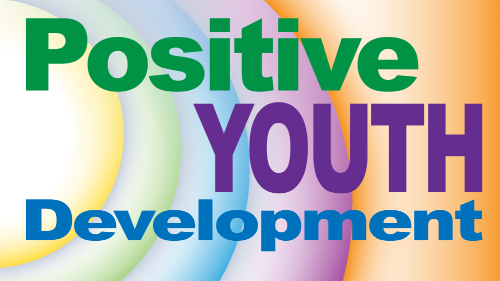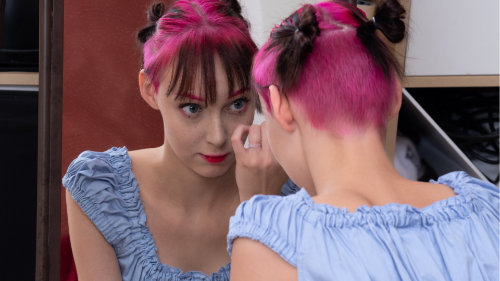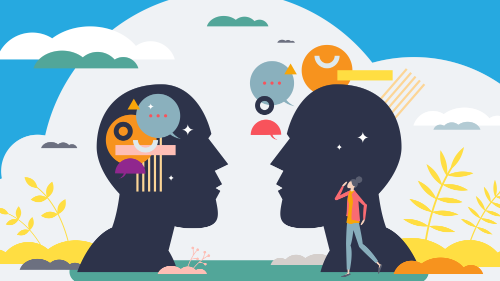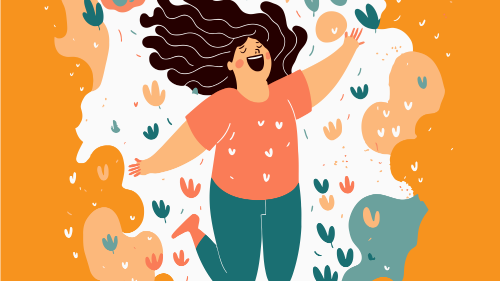SEL Toolkit: Self-Awareness
Social and emotional learning nurtures self-awareness: the ability to identify our own feelings, values, strengths, and limitations, as well as how our feelings and thoughts influence what we do. Below you'll find resources to help promote self-awareness with youth in each of the following areas:
- Identifying and building on strengths
- Exploring identities
- Exploring personality and learning styles
- Building on emotional intelligence
- Understanding stress and stressors
Identify and Build on Strengths
Often young people do not know their strengths, or they are not yet able to articulate their interests and skills. Helping youth identify and use their strengths is critical: It's a way to motivate them to develop the skills they need to succeed.
- When starting a new program, assess young people's individual assets.
- In conversation, gather information about young people's strengths.
- Help young people identify their sparks — their passions, interests, and dreams. The worksheet Sparks Peer-to-Peer Interview can help. To better understand the concept of sparks, consider how your own developed with the worksheet Looking Back: Sparks Interview Questions for Adults.
- Become a sparks champion, the person who supports people's sparks and creates opportunities for practice.
Peter Benson: Sparks: How Youth Thrive
This inspirational TED Talk features Peter Benson, former president of Minneapolis-based Search Institute, describing the power of sparks and the need for sparks champions.
What is Your Best Possible Self?
This Psychology Today article describes a positive psychology exercise that is supported by research.
Explore Identities
Personal Identity Wheel, Social Identity Wheel, Spectrum Activity
These activities were developed for use on college campuses but may be appropriate for some groups of adolescents. They are available on the Inclusive Teaching website of the University of Michigan.
Identity Charts
This activity from Facing History and Ourselves uses a graphic tool to help young people consider the many factors that shape who we are.
Bio-Poem
This activity from Facing History and Ourselves helps students clarify important elements of their identities by writing a poem about themselves. Bio-poems help students get beyond the aspects of identity that are often more obvious and familiar (such as ethnicity, gender, and age) by asking them to focus on factors that shape identity, such as experiences, relationships, hopes, and interests.
Explore Personality and Learning Styles
Youth work professionals can help young people understand themselves better by providing feedback on how they appear to learn best, or by inviting youth to assess their own learning styles and personality types. By understanding learning styles, professionals can tailor teaching strategies to accommodate differences in these styles.
Howard Gardner's Multiple Intelligences
This handout briefly outlines the characteristics of different learning styles.
Literacyworks: Multiple Intelligences
This website contains resources, practice strategies, and an online assessment for adults that is also appropriate for adolescents.
VIA Survey
The VIA Institute on Character provides a character strength assessments for youth and adults. Registration is required.
Wellcast's Automatic Thoughts
This narrated animation demonstrates common automatic, negative thoughts and thinking traps. Wellcast also offers a worksheet to help youth deal with automatic thoughts.
Thinking Traps
This resource from the Anxiety Disorder Association of British Columbia helps youth understand different types of thinking traps.
Usable Knowledge: The Biology of Positive Habits
This article and brief video from the Harvard Graduate School of Education discuss how the human brain is wired to focus on the negative — and how we can "reprogram" it.
Build on Emotional Intelligence
Practicing Positive Emotions
Completing this TeensHealth activity will encourage adolescents to consider how they can have "daily helpings of positive emotions."
Understand Stress and Stressors
Invite self-reflection on stress and behavior. When youth feel stressed, you may have an opportunity to ask:
- How does your body feel when you're stressed? Are your muscles or stomach tight or sore? Are your hands clenched? How is your breathing?
- What are you feeling? Angry or sad?
- What are you thinking of?
- When you feel like this, what can you do to calm yourself down?
KidsHealth: The Story on Stress (Kids' Pages)
Written for elementary school age youth, these interactive web pages provide information and guidance on how to identify stressors and cope with them. The website is supported by the Nemours Foundation.
KidsHealth: Stress and Coping Center (Teen Pages)
Written for adolescents, these interactive web pages provide information and guidance on how to identify stressors and cope with them.






